If you happen to have hummingbird feeders in your yard, chances are high that you’ve witnessed the aggressive behavior of these tiny birds.
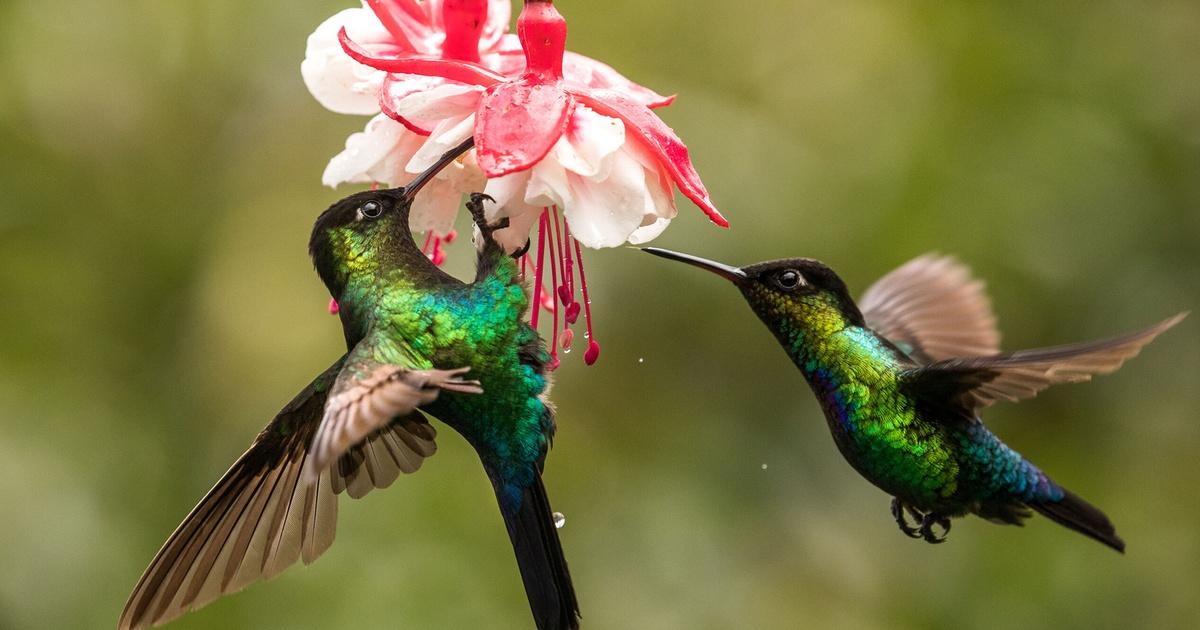
Hummingbirds may appear adorable and harmless due to their petite physique and vibrant plumage, but they can display a fierce territorial behavior when it comes to their food. The male hummingbirds, in particular, are highly vigilant about safeguarding their sources of nourishment.
![]()
Hummingbirds may be tiny, but they have big appetites due to their constant state of hyperactivity. It’s important for them to have access to as much food as possible throughout the day. If a male hummingbird discovers a prime food source, he becomes fiercely protective of it. While he will allow his mate to enjoy the bounty, any other males who enter the area are met with aggression.
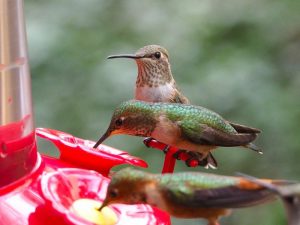
Hummingbirds are known for their aggression, especially the males. However, females are not to be underestimated as they also engage in fights. They become territorial when it comes to their nesting areas and will not hesitate to show their fierceness towards any intruders, regardless of gender. These tiny creatures will not back down and will fiercely chase away any threats to their nests.
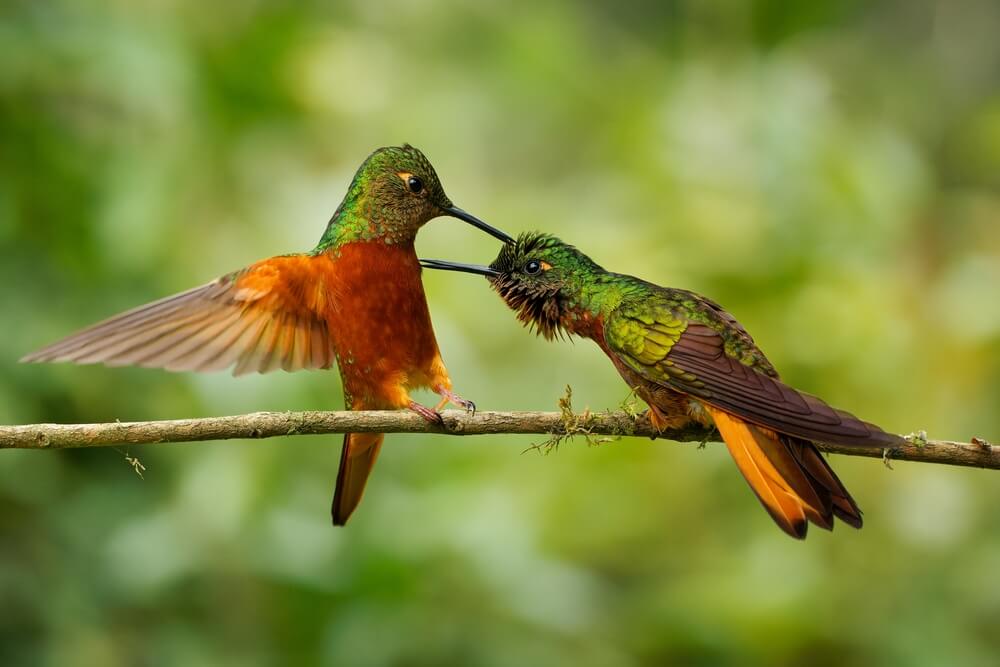
Hummingbirds are unique among bird species as they prefer to fly solo. Even during migration, they choose to travel alone rather than in flocks. This means that they do not have a complicated social structure like other birds. Hummingbirds have their own food and nesting sites without having to share them with other birds. Consequently, they tend to be highly aggressive in protecting their territories.
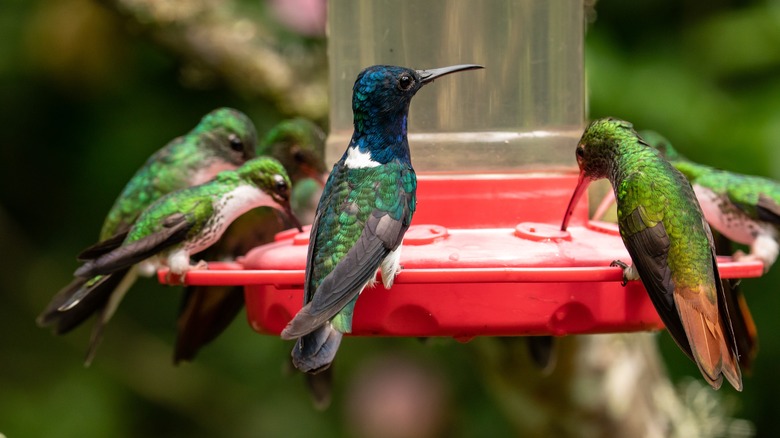
Hummingbirds are known to have an impressive metabolic rate compared to other animals. In fact, they require constant feeding to maintain their high energy levels and sugar intake. Surprisingly, their metabolism is 77 times higher than that of humans. Their primary source of energy comes from nectar found in flowers and sugar water provided by hummingbird feeders. Due to the high sugar content in their diet, it’s no surprise that hummingbirds can sometimes exhibit crankiness and aggression.

Despite their small size, hummingbirds are natural fighters due to their physical characteristics and anatomy. These birds have sharp claws and long dagger-like beaks that they use as weapons. They also have excellent eyesight and hearing, which helps them detect any intruders in their territory and take action immediately. Hummingbirds are quick and agile flyers, capable of hovering in place and flying backward, a unique trait of their species. Additionally, these birds use sound to demonstrate aggression and will even slam their bodies into their enemies during battles.
In preparation for battle, hummingbirds will puff up their feathers to appear larger and more intimidating. However, these battles often result in casualties, with one bird typically backing down or even experiencing bloodshed. Hummingbirds are also aggressive when it comes to mating, with males fighting over the same female and attacking other males to defend their claim. This is because they need to ensure that they can mate and produce offspring.
Males will also defend their territories to attract potential mates, as a large and well-defended territory is seen as a sign of strength and can make them more attractive to potential partners. Overall, hummingbirds may be small in size, but their natural fighting abilities and competitive nature make them fierce opponents in both battles and mating rituals.
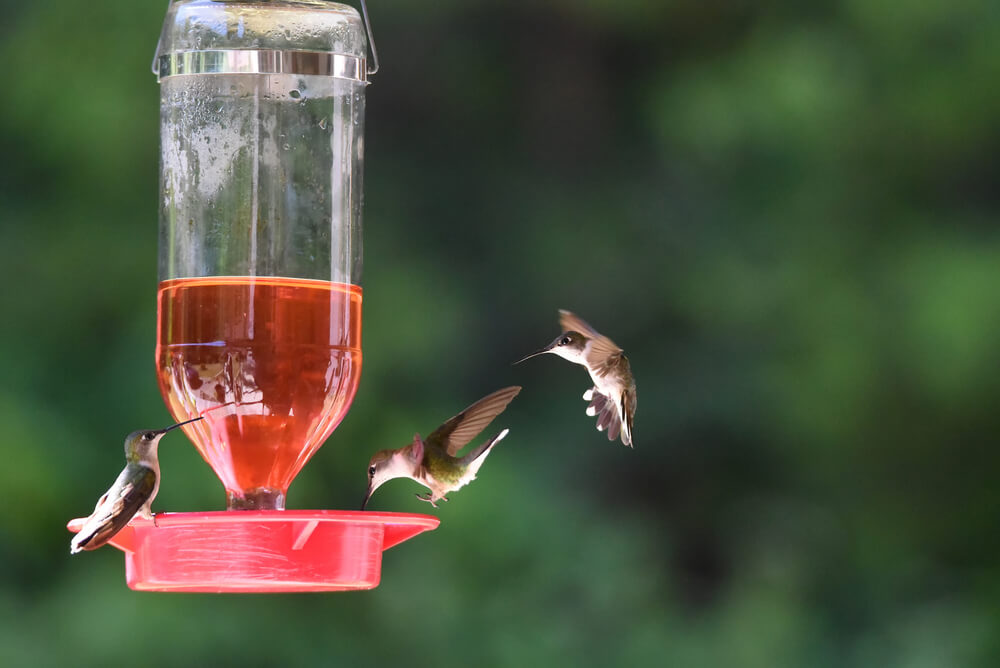
When you hang hummingbird feeders in your backyard, you may think that multiple birds can feed at the same time since there are several openings available. However, hummingbirds are not fond of sharing. In fact, male hummingbirds avoid approaching a feeder if another male is present to avoid any potential fights. These tiny birds also have their own preferences when it comes to feeders, drink holes, and perches. They can be quite territorial and become angry if they see another hummingbird drinking from their favorite feeder hole.
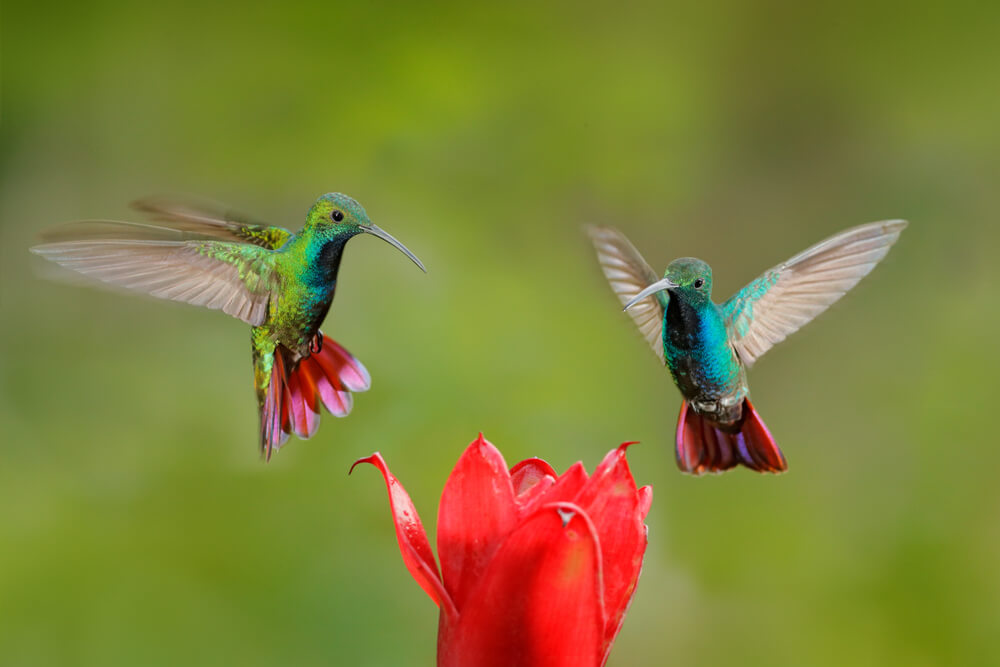
Hummingbirds display aggressive behavior as a survival strategy. By fiercely defending their food sources, they optimize their chances of survival. Male hummingbirds use aggression as a tactic for mating and passing on their genes. In spring, some species of hummingbirds exhibit more aggression, but tend to become more placid by fall. During mating season, a male hummingbird may aggressively prevent other birds from accessing his preferred feeder. However, later in the year, he becomes more amenable and allows other birds to share the feeder without any hostile outbursts.

Hummingbirds exhibit varying levels of aggression, depending on the species. The rufous and ruby-throated hummingbirds are known for their dominant and bullying behavior, often warding off other bird species and even larger ones like blue jays. Interestingly, hummingbirds’ fierce aggression and bravery have become part of the myths and folklore of indigenous cultures in North, Central, and South America. For instance, the ancient Aztec people believed that warriors who died in battle would be resurrected as hummingbirds.
Though hummingbirds’ aggressive behavior may seem intimidating, it is actually a sign of their intelligence and adaptability. By defending their food sources, they can get the most out of the available food and ensure their survival. Additionally, their aggressive mating behavior is also an adaptive trait that helps them pass on their genes. So, the next time you encounter an aggressive or bullying hummingbird, remember that it’s just doing what it needs to survive in the wild.
